You know it used to be so thick and wooded. As a little girl we used to ride the bus there. So the school bus used to go down there and make that circle around. Once you hit Overhills, it could be bright daylight on HWY 87, soon as you hit that dirt road it was like dark because the pine trees were so tall and so many it blocked the sun and could be just like a little dark cool place that you was going into.
It was just like their little secret world. - Glodean Robinson

PREFACE
We were discussing private golf courses on here recently and I mentioned a course I've been meaning to write about. Apparently, there is not much information to be found specifically regarding the design of the course. I've included what I could find. Since the story is singular and not well known I've taken the liberty of including anecdotes that convey the ambiance. Most of the photos are from the North Carolina State Archives. The anecdotes are primarily from an engaging book called OVERHILLS ORAL HISTORY by Jeffrey D. Irwin and Kaitlin O’Shea. I think you'd find it an interesting read and a worthy addition to your library.
In October of 2023, I published a 'mini-book' or pamphlet specifically about the ingenious design of the course:
LINKTHE STORY
It was a certain mystery. People would say, where are you working? I'd say Overhills and they'd go where? Who? Nobody really knew much about it. I mean you go down 87 or you go down Vass Road, you really don't see it.-Sandy Hemingway
Beyond a particular grove of longleaf pines near Pinehurst was a private estate owned by the Rockefellers and a few of their friends - the likes of Averell Harriman. When he wasn't wrestling with Churchill, FDR, Stalin, etc. about the fate of the modern world that behemoth would visit his cottage for a well deserved rest. Preventing WWIII from happening being a rather demanding affair.
That a man who could go pretty much anywhere he wanted chose Overhills makes a large statement about the nature of the estate.
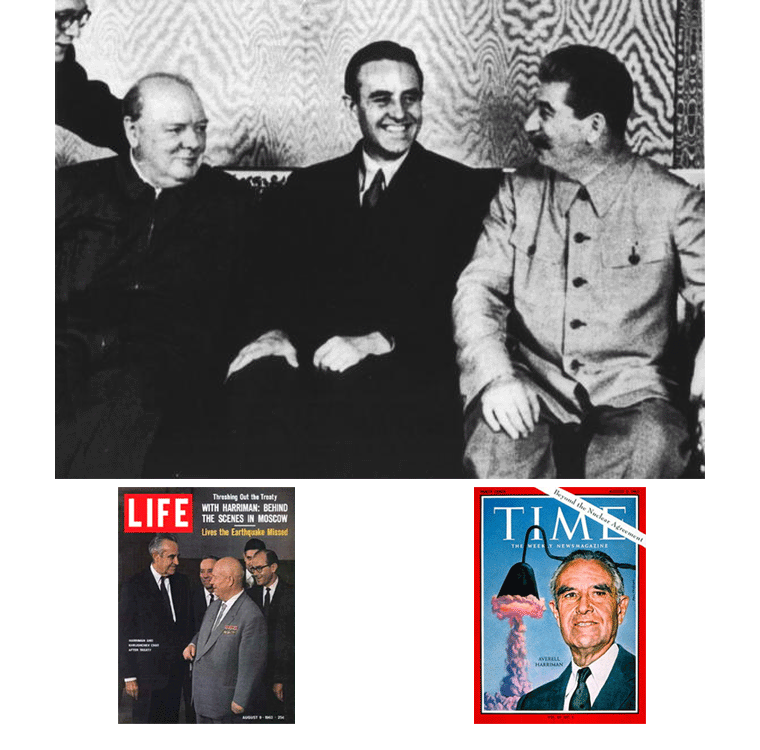
Among the other prominent members was George Herbert Walker. Walker was president of the United States Golf Association at the time. His grandson and great-grandson were both named for him - as well as both being Presidents of the United States.
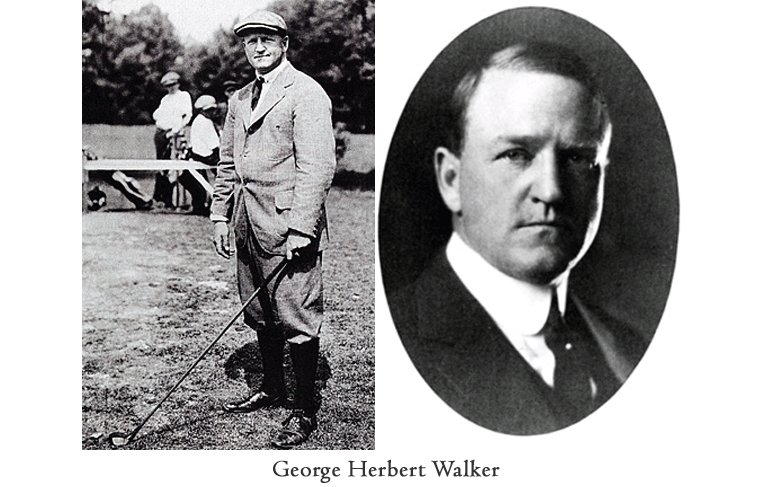
To make sure the estate was a fitting caliber they got Donald Ross to design their 18 hole course.
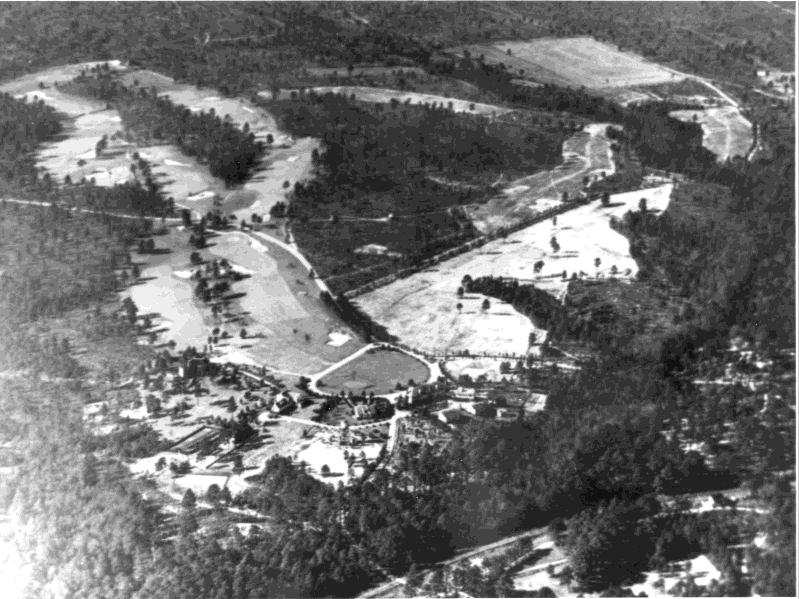
All in all the whole affair was rather extraordinary: a polo field, a private railroad depot, dairy, extensive equestrian and hunting facilities, etc. Along with the distinction of having a private Ross course perhaps the most interesting feature for me is the folklore. The estate had a profound place in the lives of many people in the area as well as large personages and families. "This idyllic Southern Arcadia" was the rarefied backdrop for many visitors as well as the local working population - and all of their children - for whom the course served as a playground as well as a golfing area.
Toward the beginning of the 20th Century the Rockefellers acquired an 11,000 acre estate contiguous with the massive Ft. Bragg property. It was originally owned in the 18th and 19th centuries by the McDiamarid family. Their Ardnave Plantation, seated along the Lower Little River near the village of Manchester, was the home of Daniel McDiarmid throughout much of the nineteenth century. Daniel was the son of Highland Scot immigrant and Presbyterian Minister Angus McDiarmid.
Ft. Bragg was one of largest military bases in the US - even before they added Overhills to it in 1997. When the sale of the Overhills community became imminent there was concern amongst historians, Ross aficionados and the local population.
The army humored them and went through the motions of listening to these populations by letting them offer ways to preserve rather than destroy this exquisite piece of American heritage. My personal favorite desperate attempt to save it was the Camp David South concept - a presidential retreat. However, as with several other golfing facilities it was ultimately absorbed by the military. During WWII Augusta National was turned over to the war effort (turkeys and cattle were the only things you would see roaming the fairways there during that war). In Overhills case it was not returned to its original use.
THE SQUIRE OF OVERHILLS
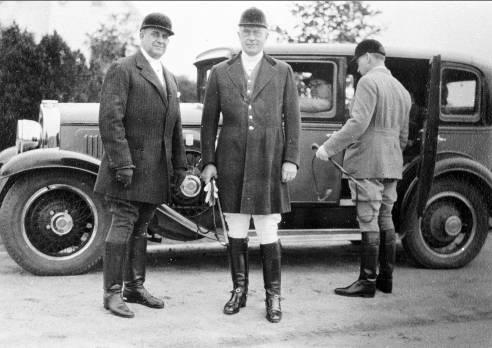
The squire of the estate was Percy Rockefeller - a member of Skull and Bones. He "was labeled in 1910 as one of the coming rulers in banking, steel, railroads, oil, and sugar. After a career aggressively involved in a wide range of capitalist enterprises, Rockefeller died at a young 57, following an operation for ulcers of the stomach". (His son Avery succeeded him as benevolent dictator after Percy's passing.) He and Harriman had a proper falling out due to the fact that Percy was a fox hunter while Averell preferred to hunt birds. After the fox hounds interfered with Averell's bird hunting a couple of times matters came to a head with Percy not being willing to curtail his hunting rituals. Averell sold his house and left for good. He left the hunting dogs behind as well.
Averell and his daughters on the porch of his Overhills cottage:
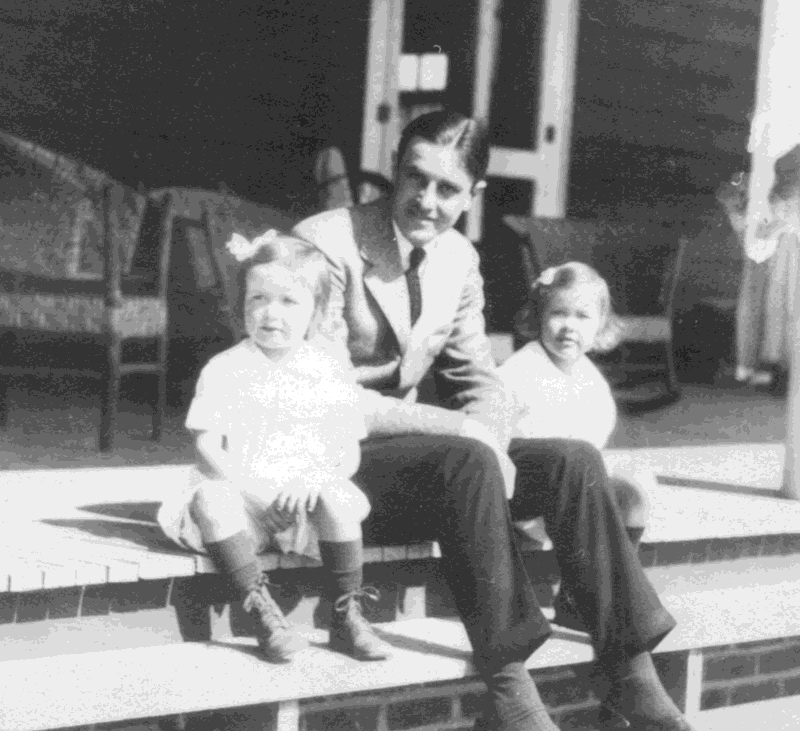
THE GOLF

Before delving into the particulars of the course, there are a couple of points which will give you some perspective on why Overhills was imbued with an uncommon mystique.
Usually, a golf course architect is given about ~200 acres to work with. Cost is, of course, also a major factor in determining what is wrought by the designer, as well. Here is a direct quote regarding the marching orders which were given to Mr. Ross:
"Here, Mr. Ross, you have 3,500 acres of property to choose from. I want a golf course that will have no superior - you are the doctor and do anything you want to - and do not consider expense when making your plans, you have an absolutely free hand."In other words, the Rembrandt of golf course design was given over 10 times the usual amount of land to work with - and cost was not a consideration. Keep in mind that this is part of the same ideal sandy loam golfing terrain as the home of American golf next door - in Pinehurst.
And, through close inspection, you will see that Ross brought the full force of his genius to bear in forming this particular golfing area.
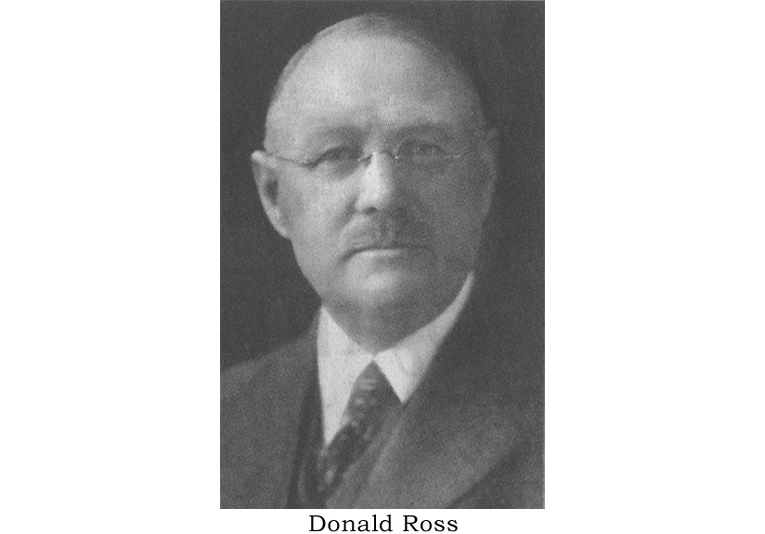
For the readers joining us who are not entirely familiar with the Ross biography one thing worth noting that he was mentored at St. Andrews in Scotland under the personal guidance of no less that Old Tom Morris. In addition to winning the (British) Open four times, Morris is universally considered the supreme patriarch of the game of golf.
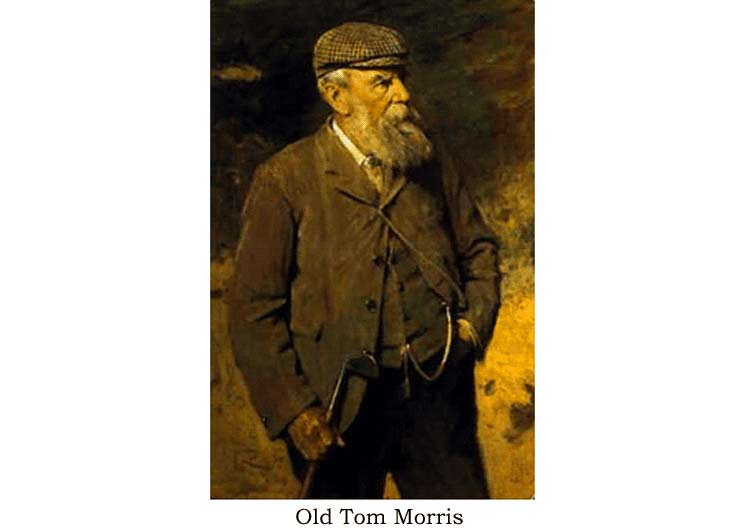
The second fact to keep in mind is that this area was - just like Augusta National - a nursery with a kaleidoscope of professionally cultivated plant species. (Mind you, Overhills was created 20 years before Augusta.)
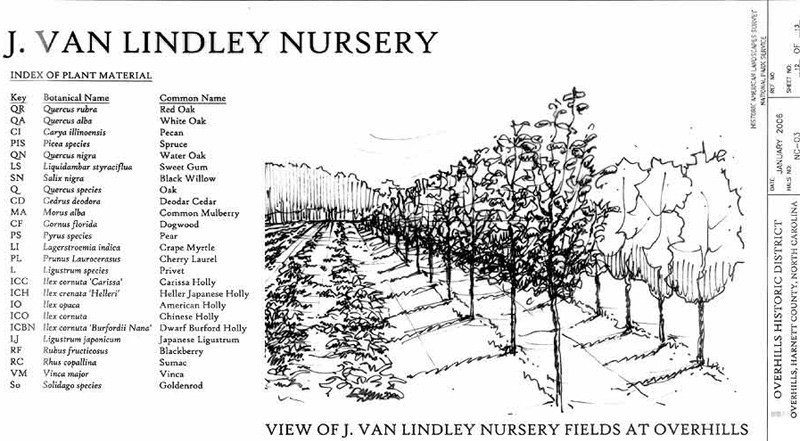
Kim Elliman (a Rockefeller):
"[The golf course] was a backdrop; it was everyone's view shed. And my grandmother took loving care of the planting both with the dogwood and other flowering plants and trees. So if you could imagine the sequence of it: you had daffodils, you had dogwoods, you had azaleas, and the budding really flowers were really focused on March 15 for six weeks and the end of April, which was when there was the heaviest use. And it really was sort of just gorgeous. It was a kid's paradise to play in, but it was just gorgeous."
Florence Short:
"You know when I'd take friends down there was usually somebody that loved the golf course. And in earlier years, if you came earlier in the spring it would all be kind of purple with bluets growing. So you'd arrive and it would just be purple."
Let's have a look at the reflections from some of the people who were there...
From "Overhills Oral History":
Bob Model (a Rockefeller):
"The front nine was magnificent and I can remember playing. To my recollection there was only one hole-in-one on the ninth hole. And in those days they were sand greens. Were you aware of that? I guess you were, of course. And those were sand greens. So I can remember when there were sand greens. And I can remember when we moved away from the sand greens. Lotes ran the golf course and did a wonderful job. I can't remember when we started trying to recreate the second nine. I don't know the layout today as opposed to when it was first – because during the war they let the second nine [get overgrown].
In my view, the front nine was the old fashioned part of the course and the back nine was trying to modernize what Donald Ross had done. Probably from a historical perspective, had they kept the sand greens and had they kept the whole course as a complete original Donald Ross course, that would be something I think that would be very unique. And interestingly I doubt we would have ever put in, had Pat not been really interested in golf, I doubt we would have converted because there would have been no need to have done that. But Pat's wife was a golfer and they had friends who came down and golfed. And people were used to country club golf so we tried to make the course a compromise. But it was a family course and it was never anything but that. It never got used very much and so consequently we really didn't – it was whatever you did for the greens and whatever you did was fine, I think. It was never considered to be anything other than just a place for the family to get out there anytime they wanted to. To my knowledge it never really got used that heavily. But in the retrospect scope, it really is too bad that it wasn't kept as an example. Today that would mean something. Thirty years ago it didn't mean that much.
And the other thing is: you probably noticed that on the golf course with the exception of a couple on the front nine, I'm trying to think which ones, you're always hitting into a hill. I don't know if you noticed that. But you're hitting into a hill. Number six you still you were hitting into a hill. That was that lovely course. Number seven you didn't hit into a hill. Three, was a par 3 and you hit into a hill. And four was par 5 and there was a small hill. Five there was a par 3 and you hit up into a hill. Six was that beautiful one that you hit off but it was always into a hill. Seven wasn't into a hill. Eight was into a hill. And nine they made it into a par 3 but it should have been a par 4 and it was down in a hole and you'd have been hitting into a hill. But a big drive in those days was a 180-200 yards."


Bob Model:
"Everybody walked on [the golf course]. I can remember in the early days, my aunt and uncle, Uncle Avery, they used to go up to number five, get up on top there and have tea. You'd have tea out there in the afternoon. In that generation everybody had tea in the afternoon. But anyway they had tea out there. They'd go out there and watch the sunset. And then Pat was very interested in golf, his wife was a golfer, and golf became popular. My father was a golfer and he used to go over to Pinehurst to play golf. In those days you could hardly get on the course over there. He always played No. 2 [Pinehurst]. I remember that. He played at Overhills, but he had friends over there and much more of a competitive type golfer. I can remember the early 50s, it was kind of a hike over there, we'd go down to Vass Road and then you'd take a left down on Young's Road."
The son of a valet there was apparently an ace golfer (Bert Alabaster) and won several employee tournaments. He had a dog that was an expert at shagging balls as well.

Louise Alabaster:
"Now that's his dog Spud. They said that this dog retrieved about 84 golf balls in less than one hour on the golf course. He'd just run, take them up, and drop them by in front of Bert, my husband. That's my husband when he was playing golf out there. He grew up out there. He spent most of time on the golf course and he used to play with the Rockefellers or caddy for them when they were there. He played all his life. I was a Sunday afternoon widow and Wednesday afternoon widow. He had work sometimes, but he played every time he had the chance, which was good. Everybody needs some outlet of some kind. We'd go out on the golf course and then lots of times they [the Bruces] would invite us over for dinner or something like that. We‟d just have a good time visiting through dinner and afterwards just sit talking. Sometimes we‟d go in the afternoon so that my husband could play golf with Mr. Bruce on the golf course. I‟d be in the Clubhouse with Ms. Bruce and we‟d just chat and do things women do when they get together. Gossip, I guess. There was nobody out there. Now usually they were because they‟re the ones that gave us permission to use it. They said Bert was welcome anytime he wanted to come, but he still felt like he had to okay it with them and usually they invited us to have a meal with them. They were real good friends."
Lotes Holmes:
"I did par the back nine one time. We had par 35 on the front nine and par 37 on the back nine, made 72. I did par the back nine 37, nine straight pars one time. That was the only time I ever did that. I lived on the course and got to play anytime I wanted to in other words and we did play it. We enjoyed it. Every Sunday afternoon Mr. Bruce and Mrs. Bruce would go out. She had some clubs and she would play along with us too. We would usually walk in the afternoon, Sunday afternoon and play nine."
Dennis Washington:
"My mom's pop had worked at Overhills way back when they were building, when they were constructing the golf course. Her grandpop had worked there, okay, when that golf course was under construction. You can imagine building a golf course without bulldozers, without chain saws and the things that we use today. But she would tell stories about how hard the work was to get it to the point where they could play golf there. I think the original greens were sand, not grass."
There are a couple of passages in the Oral History which presage the Naturalistic aesthetic that this board so values:
Freeman Tyler:
"There's one thing I can say about him is he was peculiar about the way you trimmed your shrubbery and stuff like that. He didn't like to see nothing manicured. He liked everything left natural. We'd do pruning on our shrubbery and stuff but we'd do it to where it looked like it hadn't been cut."
Tommy McPhail:
"We were out there working on the golf course one day and me and a group were planting dogwood trees, the small dogwood trees up around Bird Song. I was sort of put in charge how to do them. I thought we'll just put them in a semicircle here and that will be pretty. We start digging holes and Miss Avery just happened to be walking out. She says, “Tom, Tommy” – they always called me Tom - “What are we doing today?” I said, “We're putting out some of these pretty dogwoods out here for you.” She said, “How are we doing it?” I said, “Well my thought was to put them in a line, in a semicircle here.” “No, no, no, we can't do it like that.” I said, “Yes ma'am, how do we need to do it then?” She said, “We need to put them out there as the Lord would have put them out there.”
--
CLUBHOUSE
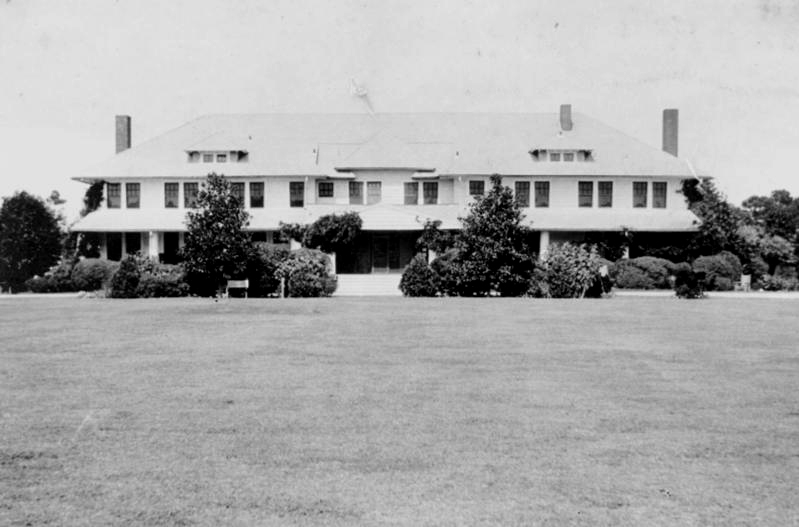
The clubhouse was designed by the New York architectural firm Tracy and Swartwout. Among their projects were the Yale Club in New York and the cloister garden at the Skull and Bones compound in New Haven. Evarts Tracy was himself a member of Skull and Bones, as well.
Ed Bruce, Jr.:
"The Clubhouse to me was always an interesting place. The Clubhouse had one big room in it, that's what I call the living room, with a big fireplace and a big moose head above the fireplace with big antlers. And facing the fireplace was a big sofa. And in front of it was a stool, a foot stool, it had like a log that must have been six feet, seven feet long with the top part of it cut off so it was flat like you cut it in half. Then two little logs on each end that would curve to match the curvature of the log. And this thing set in it. I can remember sitting in there a lot up near the fireplace or we'd play games in there on the sofa and the stool.
[They] had the big library room with shelves along one side with books in it. And then it had a gun room to where it had the racks down where people would keep their guns. I guess if when you were there as a member of the stock club or hunting club you could leave your guns there. And it had all these cabinets down below where you keep the shells and boxes of clay pigeons they'd use for shooting practice. The clay pigeon shooter was located over there not far out on the golf course from Croatan.
I was always impressed going back into the kitchen. The cook would be there, Macy, and [he] had this great big long wood cook stove also where you do the cooking. And up in the ceiling it had this chandelier light of course it was electric at this time. But prior to that it was one of the chandelier lights that had a chain hooked to it on the side wall and you could let it down. It was one of these gas lanterns that you used before electricity or in case the electricity went out."
Patricia Penny:
"Alright, to walk up the steps on the front porch – the porch was unbelievable. It was really huge and all the way from one end to the other was the most gorgeous wicker furniture. The whole thing was furnished, just absolutely elegant. And then as you walked in the big front doors there was a huge lobby that had a tremendous fireplace right in the center over on the backside."
Dorothy Yantis:
"Oh, I wish you could have seen it."
Overhills today:
